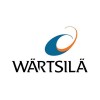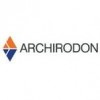Filter interviews by
Ali and sons Marine Engineering Interview Questions and Answers
Ali and sons Marine Engineering Interview Experiences
1 interview found

(2 Questions)
- Q1. What is welding
- Ans.
Welding is a process of joining two or more pieces of metal together by melting and fusing them.
Welding involves using heat to melt the base metals and adding a filler material to create a strong bond.
Common types of welding include MIG, TIG, and stick welding.
Welding is used in various industries such as construction, automotive, and manufacturing.
Examples of welded products include bridges, pipelines, and metal sculp
- Q2. Welding defects Coman
(4 Questions)
- Q1. What is arc strick
- Ans.
Arc strike is a mark left on the base metal by an electric arc during welding.
Arc strike occurs when the electrode touches the base metal before striking an arc.
It can weaken the base metal and lead to defects in the weld.
Arc strikes should be removed before welding to ensure a strong and clean weld.
Examples: scratches, burns, or pits on the base metal caused by the arc.
- Q2. Welding parameters
- Q3. Arc and fcaw welding difference
- Ans.
Arc welding uses a consumable electrode, while FCAW welding uses a continuously fed wire electrode.
Arc welding uses a welding power supply to create an electric arc between the electrode and the base material, while FCAW welding uses a tubular wire filled with flux to shield the arc.
Arc welding is typically used for thicker materials and outdoor applications, while FCAW welding is often used for welding thick materials...
- Q4. Arc welding road side me
Interview Preparation Tips
Welder Interview Questions asked at other Companies
Top trending discussions






Interview questions from similar companies

I applied via Recruitment Consulltant and was interviewed before Feb 2021. There were 5 interview rounds.
Basic c Programming and Embedded Systems
(1 Question)
- Q1. C and Do-178b questions
(1 Question)
- Q1. C and Embedded system and Project related
(1 Question)
- Q1. Manager Round, Mostly technical
(1 Question)
- Q1. Package discussion and my previous employer details
Interview Preparation Tips

Interview Questionnaire
2 Questions
- Q1. Explain about the current projects i have dealt with
- Q2. Questions related to regression fitting

Software Developer Interview Questions & Answers
MariApps Marine Solutionsposted on 1 Jul 2024
(2 Questions)
- Q1. Experience in domains
- Q2. Previous companies
(2 Questions)
- Q1. SQL basic questions
- Q2. .net and OOP basics

Software Developer Interview Questions & Answers
MariApps Marine Solutionsposted on 15 Jul 2024
(1 Question)
- Q1. Differnce between truncate and drop.
- Ans.
Truncate removes all records from a table, while drop deletes the table itself.
Truncate is a DDL command, while drop is a DDL command.
Truncate is faster than drop as it does not log individual row deletions.
Truncate can be rolled back, while drop cannot be rolled back.
Truncate resets the identity seed of the table, while drop does not.
Example: TRUNCATE TABLE TableName; DROP TABLE TableName;
(1 Question)
- Q1. Package discussion
Skills evaluated in this interview

I applied via Newspaper Ad and was interviewed before Feb 2022. There was 1 interview round.
(3 Questions)
- Q1. Basics about company.
- Q2. Basics about family.
- Q3. General knowledge questions
Interview Preparation Tips


Had the coding round and we have to solve the find nth largest element.
(1 Question)
- Q1. Java 8 concepts and oops concepts

Senior Software Engineer Interview Questions & Answers
Collins Aerospaceposted on 13 Jun 2024
I applied via Naukri.com and was interviewed in Dec 2023. There were 2 interview rounds.
(1 Question)
- Q1. DO 178 B/C Process
- Ans.
DO 178 B/C is a software development standard for airborne systems.
DO 178 B/C is a set of guidelines for developing software for airborne systems.
It ensures that software is reliable, safe, and meets regulatory requirements.
The process includes requirements analysis, design, coding, testing, and verification.
Compliance with DO 178 B/C is often required for certification of avionics software.
(1 Question)
- Q1. Tell me about yourself

I applied via Naukri.com and was interviewed in Aug 2024. There was 1 interview round.
(2 Questions)
- Q1. Question based on project architecture
- Q2. Access specifiers
Interview Preparation Tips
- Oops concept

(2 Questions)
- Q1. Differentiate between RISC and CISC
- Ans.
RISC stands for Reduced Instruction Set Computing and CISC stands for Complex Instruction Set Computing.
RISC processors have a smaller set of simple instructions, while CISC processors have a larger set of complex instructions.
RISC processors typically execute instructions in one clock cycle, while CISC processors may require multiple clock cycles.
RISC processors rely on optimizing compilers for performance, while CISC...
- Q2. Define and differentiate interpreter and compiler
- Ans.
Interpreter translates code line by line while compiler translates entire code at once.
Interpreter: translates code line by line, slower execution, easier debugging (e.g. Python)
Compiler: translates entire code at once, faster execution, harder debugging (e.g. C++)
Ali and sons Marine Engineering Interview FAQs
Tell us how to improve this page.
Interview Questions for Popular Designations
Ali and sons Marine Engineering Interview Process
based on 1 interview
Interview experience
Interview Questions from Similar Companies
Ali and sons Marine Engineering Reviews and Ratings
based on 1 review
Rating in categories
|
Project Engineer
3
salaries
| ₹17 L/yr - ₹17 L/yr |

Collins Aerospace

Hapag-Lloyd

Mazagon Dock

Wartsila
- Home >
- Interviews >
- Ali and sons Marine Engineering Interview Questions










